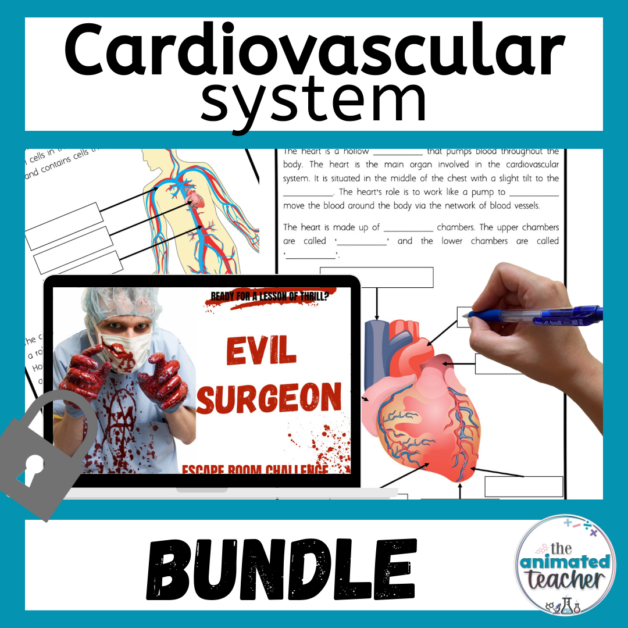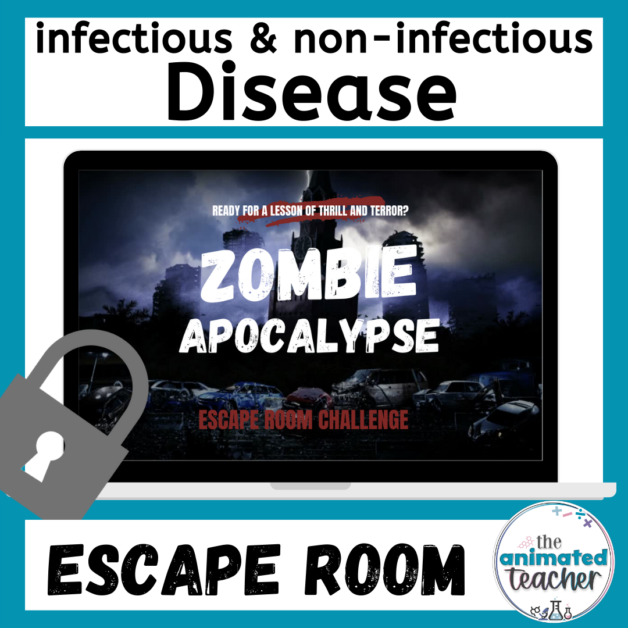
30 dynamic escape room themes for the classroom
30 dynamic escape room themes for the classroom
Captivate students’ attention by designing your own escape room with these immersive escape room themes. Imagine stepping into a classroom where learning transcends the traditional boundaries of textbooks and lectures. Instead, students find themselves immersed in an interactive adventure, where problem-solving, critical thinking, and teamwork are the keys to success.
Escape rooms have gained popularity worldwide as thrilling, real-life puzzle-solving experiences. But what if we could harness the excitement and engagement of escape rooms for educational purposes? That’s precisely what educators around the globe are doing by incorporating escape room themes into their classrooms.
Picture this: students eagerly gather around, anticipation brimming as they prepare to embark on a journey of discovery and learning. With each challenge they face, they delve deeper into subject matter, applying knowledge in creative ways to unlock clues, decipher codes, and ultimately escape the room.
In this blog post, we’ll explore the captivating world of classroom escape room themes and how they can transform learning experiences for students of all ages. From history and literature to math and science, the possibilities are endless when it comes to designing immersive escape room adventures that ignite curiosity and inspire a love for learning.
So sit back and relax while I give you 30 escape room themes to help you engage students in your next escape room challenge.

What is an escape room?
An escape room is a series of puzzles that students need to solve in order to ‘escape’ where the answer to one task is the secret code that ‘unlocks’ the next clue. The tasks usually consist of different types of escape games such as critical thinking puzzles, ciphers, math problems, codes, and riddles.
In a classroom setting, these puzzles are related to content that has been taught and is a fun way to review key infomation and understanding in a new context.
An escape room can be done as a physical classroom activity with locks and keys etc, or as a virtual escape room or digital escape room.
If you’d like to check out my best selling digital escape rooms that utilize google forms and are zero prep, click here.
Why use escape rooms as a class activity?
Escape rooms are an excellent way to promote student engagement in learning as they foster critical thinking skills and problem solving, promote collaboration and team building. It is a great opportunity to have students develop communication skills and problem-solving skills alongside reviewing subject content matter.
These are an awesome tool to use at the end of a topic, as a creative activity on the last day of school, or as a reward for students (because they absolutely LOVE them!)
An escape room activity can be suitable for any grade level as the puzzles and content can be tailored to what will suit them. I love using them with my middle school students and high school students as a change of pace in the classroom.
30 escape room themes for the classroom
Selecting a theme to run your escape room challenge in is a great way to take it to the next level and help students immerse themselves in the experience.
If you are wanting to set up some DIY escape rooms for your students, these escape room ideas will help to bring your escape room games to life!
1. Zombie Apocalypse: The government let an experimental virus loose which has caused a zombie apocalypse.
You need to solve all the clues in order to determine the antidote and put an end to the zombie virus.
2. Masquerade: A murder has been committed at a masquerade ball. Solve the clues to unmask the murderer.
3. Murder mystery: A murder has taken place while you were in class… collect the clues to identify the murderer.
4. Houdini’s secret room: You went snooping around the famous magicians house. But now you can’t find your way out through all the secret doors and locks! Solve the puzzles to escape before he catches you.
5. Stuck in a video game: You’ve been sucked into a video game! You must pass each level as a character in the game in order to return to normal life.
6. Prison escape: You’ve been wrongfully accused and locked up in a prison… for life.
7. Evil surgeon: An evil surgeon has you captive and is wanting to cut you open and collect your heart for his gruesome collection.
8. Ninja attack: You have been captured by a group of ninjas who wants to take over the school. There is no way you can fight your way out of this – they are way too skilled.
But you may have a chance to outsmart them… Solve the puzzles to outsmart the ninjas and escape!
9. Alien abduction: You have been captured by aliens! You must prove yourself as an intelligent species in order to escape. Solve each puzzle and riddle in order to prove your worth.
10. Stuck in History: You’ve been stuck in the year ______. You must pass each test about the history of this time period to return to present day.
11. Wizards: The wizarding and magic world is a great space for escape room themes. Whether it be related to spells, dark magic, potions, magic castles, or more, you could easily use this as an escape room.
12. Pirate Attack: A band of pirates has jumped board your ship! The pirates are in search of hidden treasure and they think you can help them.
You must solve each challenge in order to locate the treasure and escape the pirates.
13. Mad Scientist: A mad scientist has trapped you in his lab. You need to prove your worth as a scientist. Solve all the clues in order to beat the mad scientist and escape!
14. Missing person:
15. Bank Heist: In bank heist escape room themes you could set the scene with the students as the robbers who get stuck in a vault and have to escape, or as the bank trying to stop the robbers.
16. Zoo escape: This is one of my favorite escape room themes! You are on work experience at the zoo… but you accidentally left the gates unlocked and many of the animals have escaped.
The zookeeper is not happy. You must solve a clue at each of the zoo enclosures to lure the animals back inside.
17. Military-themed escape room: The army or navy make great escape room themes for the classroom.
18. Army Bootcamp
19. Buried treasure: Utilize treasure maps and treasure chests to make this escape room theme come alive.
20. Circus: A creepy clown has run havoc on the circus by damaging all of the rides.
You must solve the clues to fix the rides and make sure no-one gets hurt!
21. Haunted house
22. Runaway Train
23. Witch’s Spell
24. Potions: You’ve stumbled into a witches potion lab!
She won’t let you leave until you prove yourself worthy of creating very precise potions.
Special occasion escape room themes for the classroom
Holidays and special occaisions are perfect to grab hold of for escape room themes for the classroom. By incorporating these as escape room themes, students can engage with the holiday while still being engaged in the learning.
25. Leprechaun Heist St Patrick’s Day theme: A cheeky leprechaun has hidden a pot of gold at the end of A rainbow! You must solve each challenge in order to locate the rainbow and the pot of gold.
26. Thanksgiving disaster: oh no! Someone has taken your turkey hostage and locked it in the oven! You need to solve the clues to work out the code for the lock and save your turkey before it is ruined!
27. Evil Elf Christmas theme: An evil elf has stolen all the toys in santa’s workshop.
You must solve the clues and help the other elves find the presents and save christmas!
28. Santa’s workshop theme: You are applying for a job in santas workshop.
You must complete a series of tasks to prove yourself as a good problem solver and creative thinker to get the job.
29. Valentines Cupid theme: Oh no! Cupid accidentally lost his magic bow and arrow in a poker game with his other magical friends.
Solve the clues and get the bow and arrow back before valentine’s day is ruined!
30. Halloween themed – although almost all of the examples above could be used for Halloween escape room themes!
Conclusion:
Which of the escape room themes for the classroom do you want to try?
Got any other ideas for escape room themes for the classroom? Drop them in the comments below!
About the Author

Katrina Harte is a multi-award winning educator from Sydney, Australia who specialises in creating resources that support teachers and engage students.
































